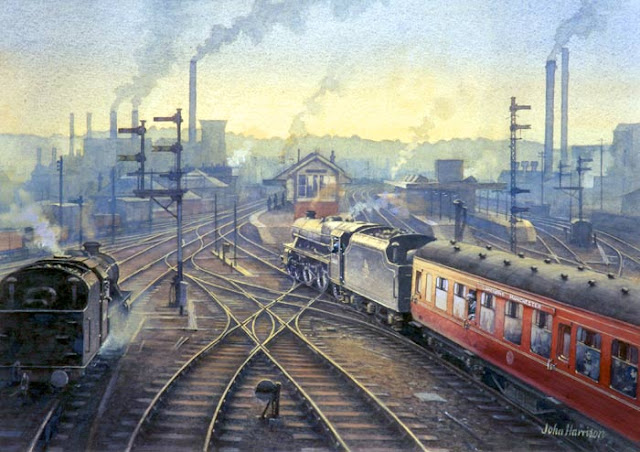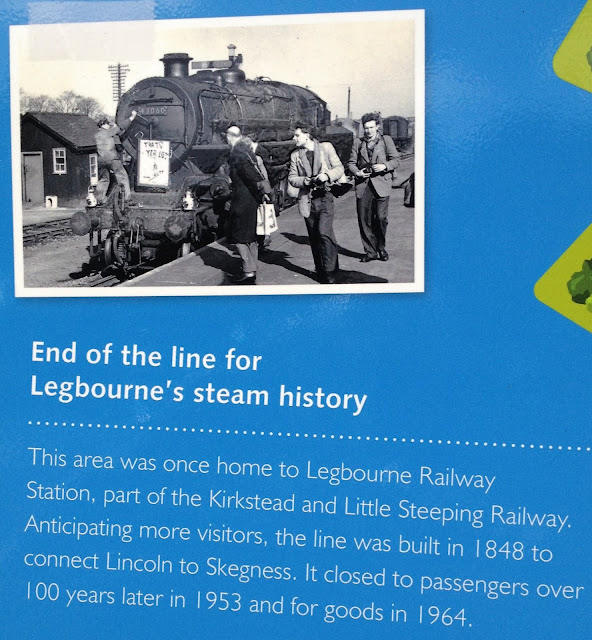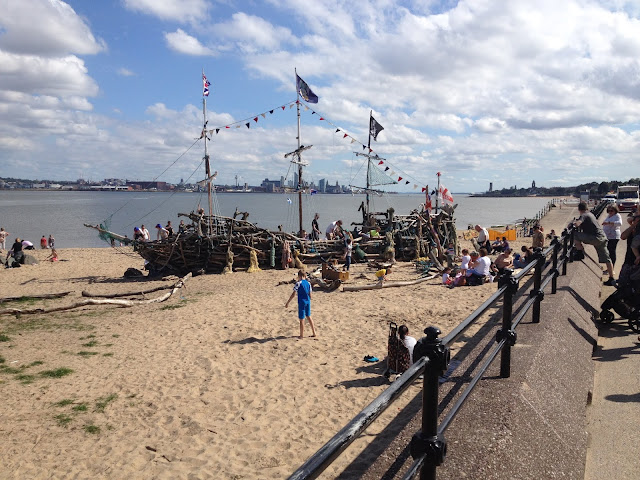I wended my way to the GC Railwayana auction at Stoneleigh
with Bob Dylan for company, this time. When I’m on my own, I tend to listen to other
peoples’ conversations for entertainment, though I
realise that this is not necessarily an endearing characteristic. A
stall-holder drew his visitor’s attention to a collection of luggage labels,
which I gathered were a job lot from a previous [now, late] avid collector.
“Very soon, nobody will know what they were”, he added ruefully.
On another stall, I noticed a blue enamel sign from LNER
days. I was about to ask if I could take a picture of it when someone snapped
it up. Perhaps he saw me eyeing it and decided to take the plunge there and
then. It said something like “Please lock the back wheels of your bicycle”. I
was just imagining the possible scenario that had made that sign a requirement,
when it disappeared through the door in the company of its new owner, before
being locked above the back wheel in the boot of a car.
I always gravitate to the paintings, these days. Once again,
I’m tab-hanging. Do other people see what I see? Do they share my tastes about
what makes a good railway painting? My guess is that both of these men next to
me are too young to remember steam as an everyday occurrence on the main line
in the 1960s. “The number plate’s wrong”. I couldn’t see that. It looked
perfectly OK to me. “It’s in the wrong place”…. “
He’s got that right”,
he said, turning to the next painting, “..but it’s not so technical”. In this
second painting, the engine is further away, so the same level of detail is
probably not necessary [or even possible], though the perspective and the
overall accuracy, I agree, is certainly present. They go back to the first
painting. “The smoke’s wrong. It’s a shed scene. It wouldn’t be so thick”. I’ve
heard this one before elsewhere, though coincidentally [and somewhat
surprisingly], it was the same artist coming in for criticism. Then it had been
a rather scornfully, “How can you have the smoke from two engines in the same
painting blowing in different directions?”
When I got home, I checked out number plate positions when
compared to photographs on Coronation Pacifics and Jubilees. Both paintings
were accurate representations.
Smoke, however, is very variable stuff. It is perfectly
possible for smoke to appear to blow from one locomotive stopped in a station
in the direction of the prevailing wind and for the smoke from another
locomotive travelling through the scene towards the former, light engine, to
trail its steam in what appears to be an into the wind direction. For locos on
shed, the possible variations in the amount, colour, density and direction
taken by smoke emanating from smokebox chimneys are almost limitless. They
might include - the state of the fire [firing up, building up steam or dropping
the fire], the type and quality of the coal and the impact of hosing down, wind
or lack of it [strength, direction, consistent or gusty], the open or hemmed in
nature of the yard, the presence of nearby locos, nearby buildings [inside,
outside, near or far, tall or single storey].
It makes a nonsense of trying to make definitive judgements
about the circumstances on the day. You have to conclude that some people just
like to try to sound authoritative even when they are not. My advice would be,
if you weren’t there on the day and you only have the painting to go on, give
the artist the benefit of the doubt. The artist was there [or at least had a
photo to go on].




















































